In the figure shown all pulleys are ideal and small. The central pulleys is 2 m away from both ends. What is the length (in m) of the string ? The system is in equilibrium

8√3
4√4[1+2√5]
4√3[1+2√3]
2√3+4
The correct Answer is:B
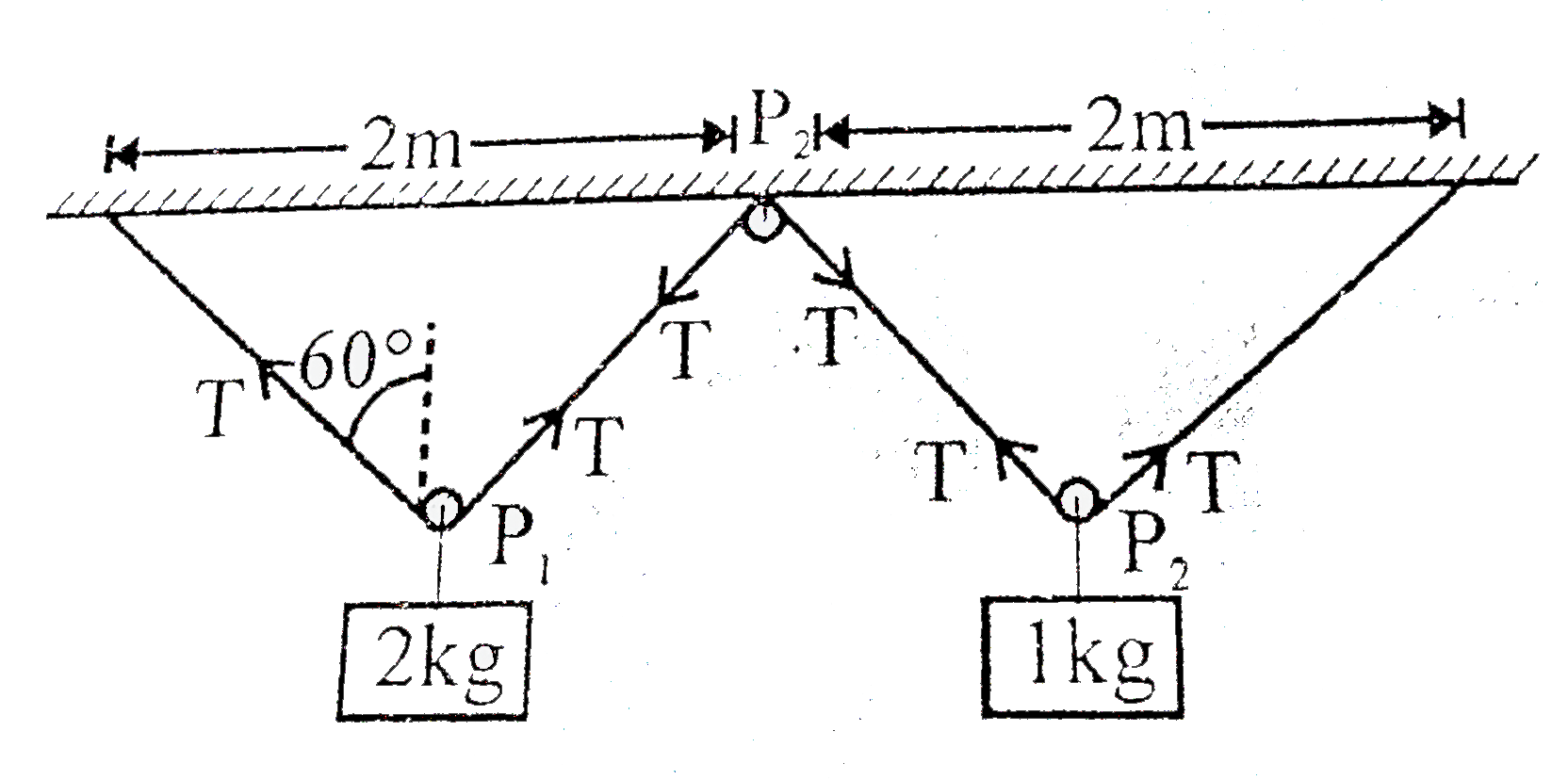
All pulley are smooth so tension in sring is same. At all points
For horizontal equilibrium at P1
Tsin60∘
For vertical equilibrium at P3
2Tcos60∘=20
T=20 N
for vertical equilibrium at P3
2T×cosθ=10
2×20×cosθ=10
⇒cosθ=14⇒sinθ=√154
⇒ length of string =2cosec60∘+2cosecθ
2×2√3+2×4√15=4√15=4√3(1+2√5)
Topper's Solved these Questions
- BOOK - BANSALCHAPTER - TEST PAPERSEXERCISE - PHYSICS PART (A)32videos
TEST PAPERS
- BOOK - BANSALCHAPTER - TEST PAPERSEXERCISE - PHYSICS PART (B)3videos
TEST PAPERS
- BOOK - BANSALCHAPTER - TEST PAPERSEXERCISE - PHYSICS PART- C4videos
TEST PAPERS
- BOOK - BANSALCHAPTER - SEMICONDUCTORSEXERCISE - CBSE Question32videos
SEMICONDUCTORS
Similar Questions
Three loads of mass m1,m2 and M are suspended on a string passed through two pulleys as shown in Fig. The pulleys are at the same distance from the points of suspension. Find the ratio of masses of the loads at which the system is in equilibrium. Can these conditions always be realized? The friction should be neglected.
 View Solution
View SolutionConsider4 the situation shown in figure. Bothe the pulleys and the string are light and all the surfaces are friction less. a. Find the acceleration of the mass M. b. Find the tension in the string c. Calculate the force exerted by the clamp on the pulley A in the figure.
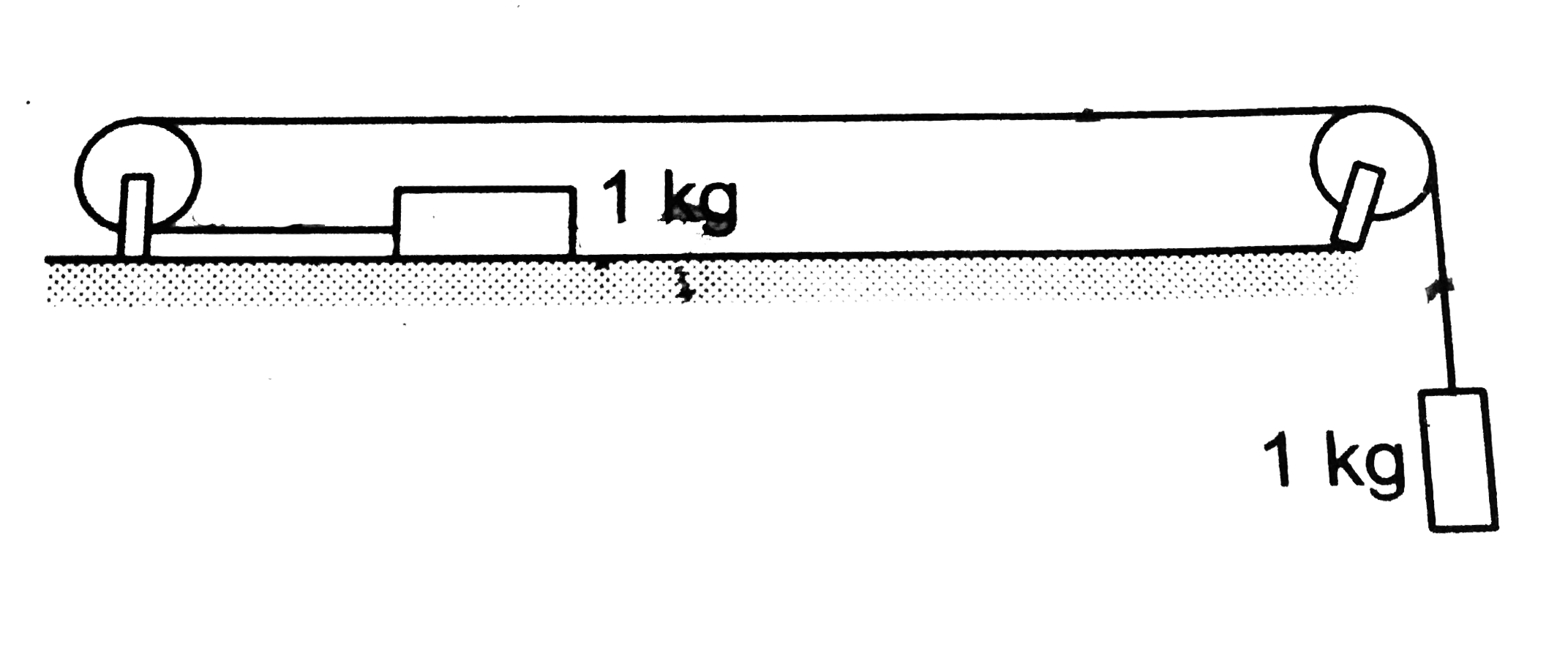 View Solution
View Solution
Knowledge Check
- Question 1 - Select One
Two masses m and M are attached to the strings as shown in the figure. If the system is in equilibrium, then
 Atanθ=1+2MmBtanθ=1+2mMCcotθ=1+2MmDcotθ=1+2mM
Atanθ=1+2MmBtanθ=1+2mMCcotθ=1+2MmDcotθ=1+2mM - Question 2 - Select One
If the string & all the pulleys are ideal, acceleration of mass m is :-
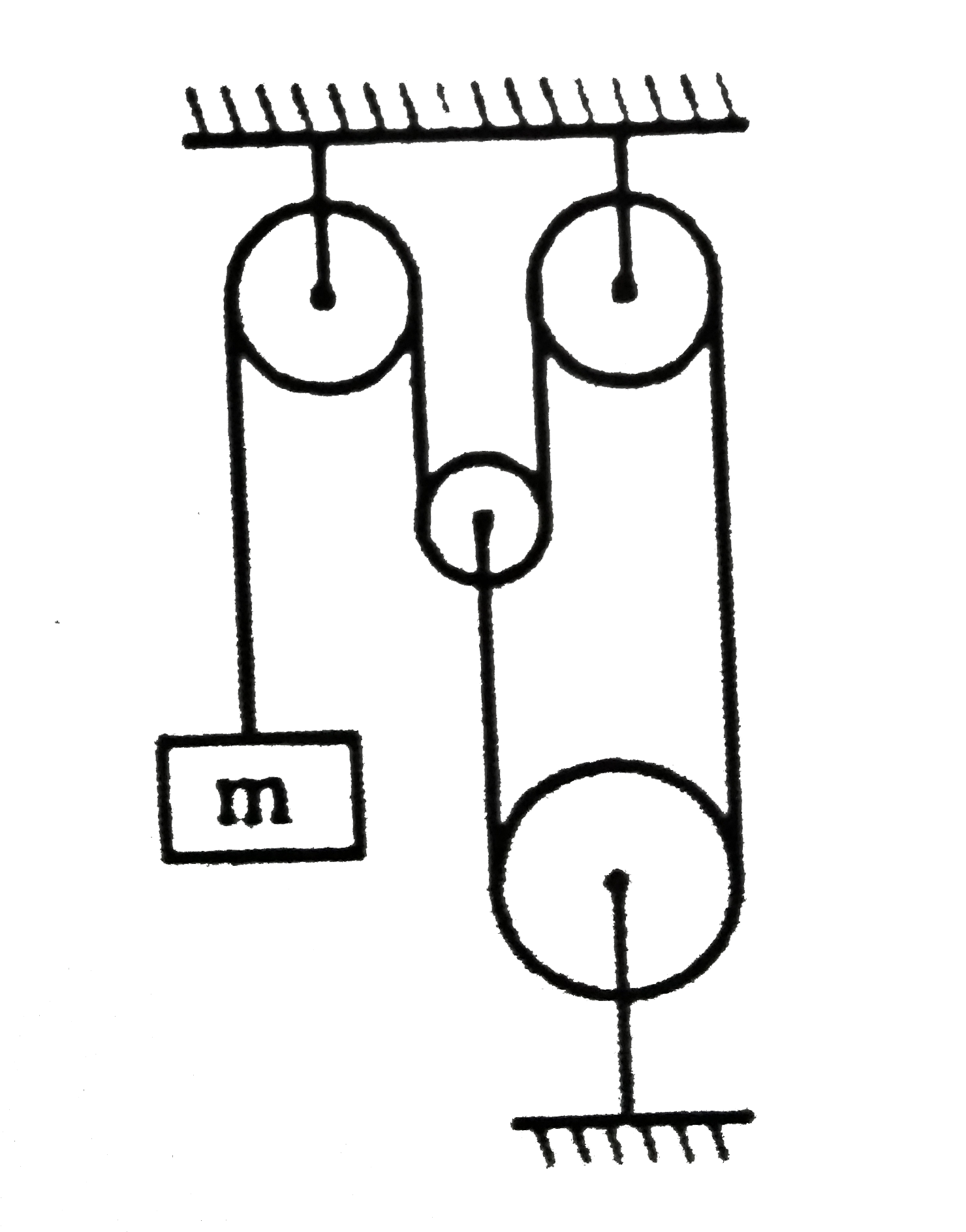 Ag2B0CgDdependent on m
Ag2B0CgDdependent on m
In the arrangement shown, the pulleys, string and the spring balance, all the ideal. If m1>m2, then the reading of the spring balance is
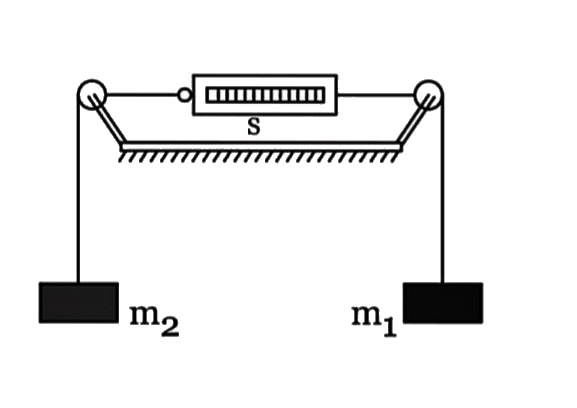 View Solution
View SolutionIn the figure shown, the strings and pulleys are massless. The blocks are in equilibrium. If the force by the clamp on the pulley is √83 mg then Mm is equal to
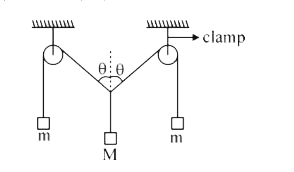 View Solution
View SolutionAs shown in figure pulley is ideal and strings are massless.If mass m of hanging block is the minimum mass to set the equilibrium of system, then -
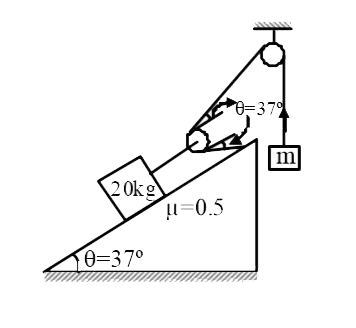 View Solution
View SolutionIn figure shown, pulleys are ideal m1>2m2. Initially the system is in equilibrium and string connecting m2 to rigid support below is cut. Find the initial acceleration of m2 ?
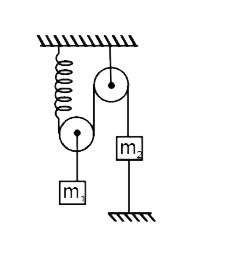 View Solution
View SolutionConsider the situation shown in figure. Both the pulleys and the strings are light and all the surfaces are frictionless. Calculate
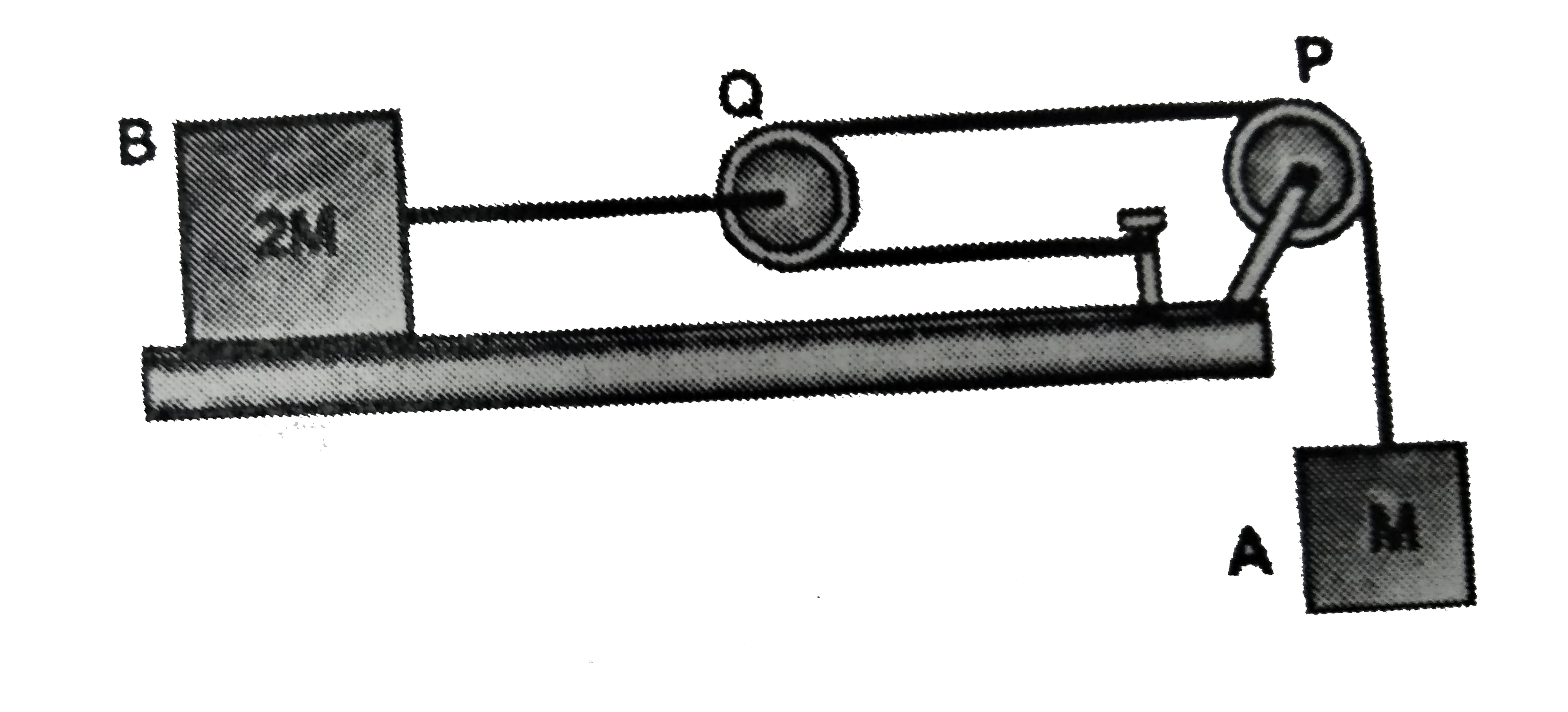
(a) the acceleration of mass M,
(b) tension in the string PQ and
(c ) force exerted by the pulley P.View SolutionIn figure shown, pulley are ideal m1>2m2. Initially the system is in equilibrium and string connecting m2 to rigid support below is cut. Find the initial acceleration of m2 If m1=6kg,m2=2.5kg and g=10ms−2
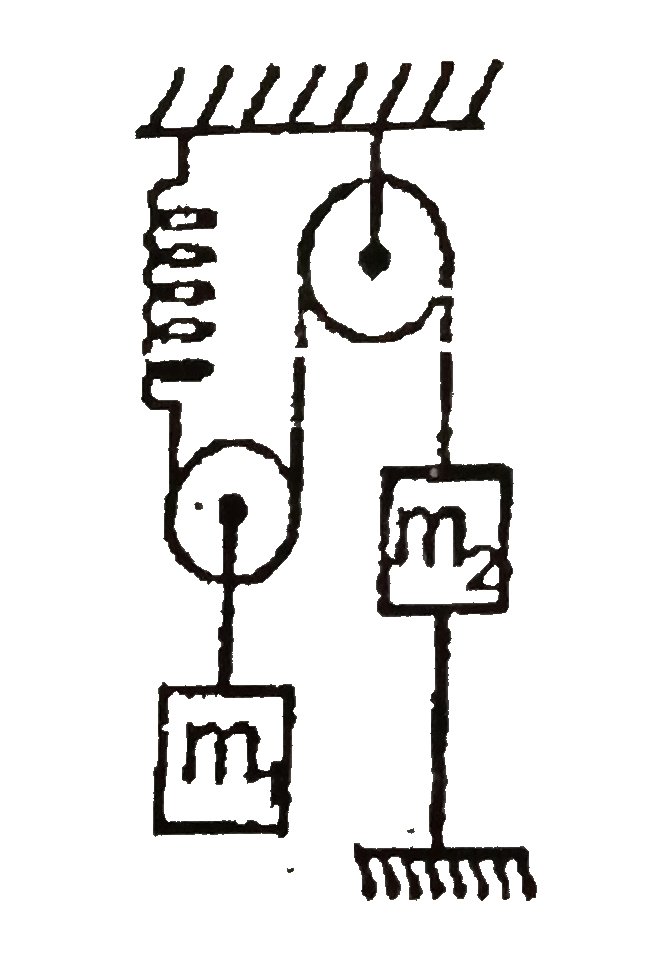 View Solution
View Solution

